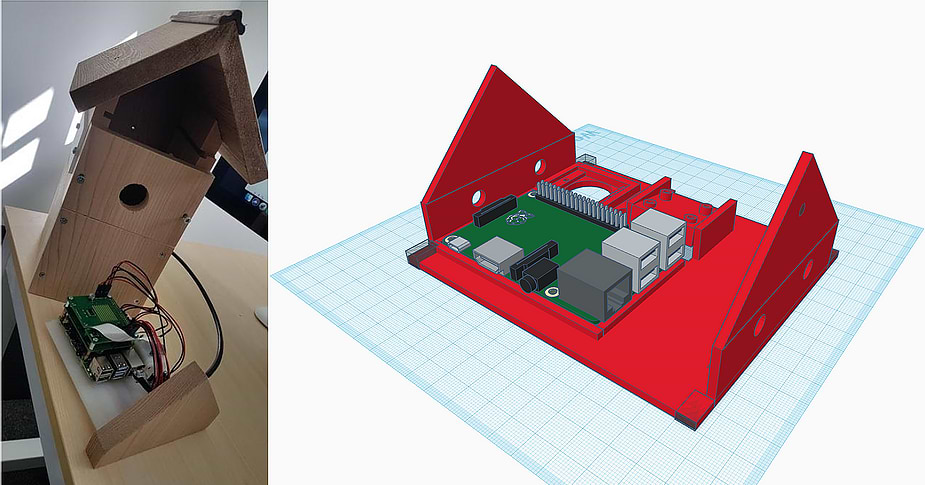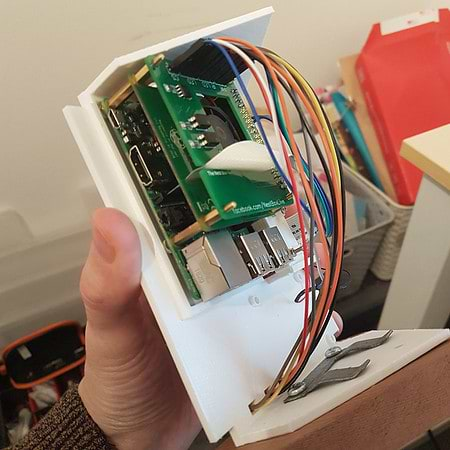Jamie with his amazing Nest Box – the story behind the project
This blog post was written by Jamie Wainwright, the founder of the Nest Box project.
The Nest Box started in 2018 with the pursuit to find camera technology that could fit inside a small enclosed space and stream directly to social media. In the past ten years, nest box camera technology has largely remained unchanged and nest watchers have had to rely on poor quality and unreliable analog TV signals.
In the absence of any viable ‘off the shelf’ solution, there emerged an opportunity to develop a new type of technology. The project had three main aims. Firstly, superior image quality, better than anything else on the market. Secondly, to stream directly to social media (Facebook, YouTube, etc) and thirdly, the ability to remotely manage devices to continually monitor and develop the technology.
With these specific aims in mind, it seemed practical to use a Linux based single board computer to run the whole system, in addition to motion sensors and LED lights which are all glued together with intricate software programming to enable all of the components to interact with each other.
What became apparat was the need to fit all of these components inside the roof of a relativity small nest box. Easley designs for this were drawn up on 3D modeling software and a number of designs were prototyped using 3D printing.

The first nest box started streaming live in the Spring of 2018 and gained an initial following of 1,000 people on Facebook who took to the unique insight of the happenings inside a nest.
From starting with a single nest box in 2018, there are now 10 devices that are sited around the UK and include species such as Blue Tit, Kestrels, and Barn Owls. The aim is to create an international network of these live streaming nest box cameras and share the live content on our Facebook page, which currently has over 60,000 followers and is widely gaining international recognition.
We have recently taken a number of orders for international customers and we will be shipping units out to Belgium, Germany, and South Africa.
Interesting technical details about the Nest box project

connected to a custom-designed PCB hat that interfaces with the Pi. This enables us to stream live feeds directly to social media, send e-mail notifications when there is an activity, record videos of any visits. I am always working to update and develop The Nest Box system to bring improved features, improve reliability, and enhance the user experience.
One of the main challenges when rolling the project out, was the ability to remotely manage devices once they were deployed. This has been solved using JFrog Connect device management platform that enables me to see, in real-time, what devices are online, and if there are any system or application alerts that need addressing. Also, I am able to monitor disk, RAM, and CPU usage to see if there are any irregularities in the system. If there are any irregularities, the ‘smart detection’ feature automatically sends an e-mail to notify me when a certain CPU, RAM, or disk parameters have exceeded a set limit. This is really useful for detecting problems before there is a whole system shutdown.

One of my favorite features of the JFrog Connect platform is the Application Monitor. Whenever a bird enters the nest box, the motion sensor detects movement and stores that in a local file on the system. Using JFrog Connect REST API, I am then able to push that data directly to the device dashboard for monitoring in real-time.




